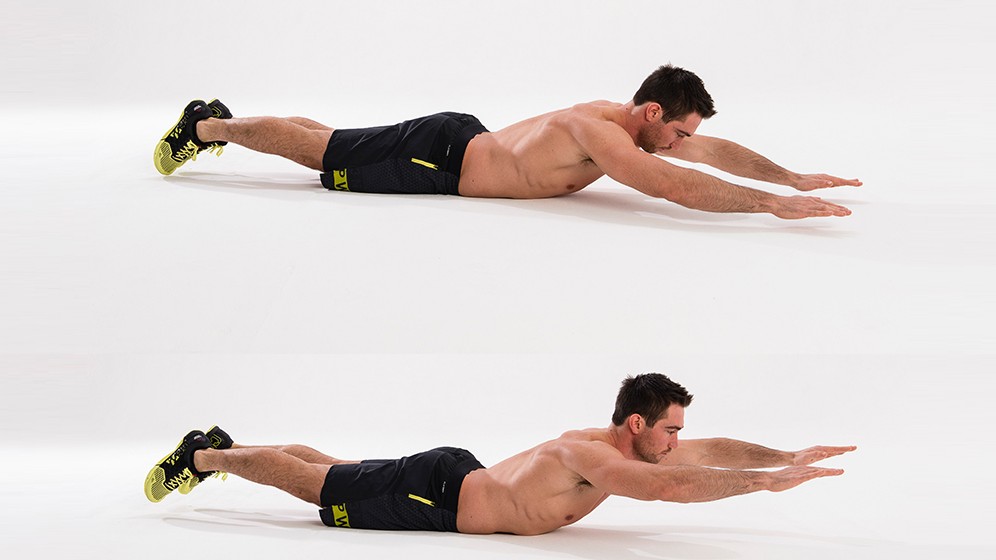How To Do The Superman Exercise
Get ready to fly with with this back- and core-strengthening classic

Considering he is the greatest superhero of them all, it is unsurprising to learn that Superman has not one, but two, exercises named after him. Unfortunately neither of these exercises – the Superman and the Superman plank – will give you the ability to fly, or shoot lasers from your eyes, or any of the other really cool things Superman can do. But they will give you a stronger core. Just like, presumably, Superman has.
The Superman should be part of the workout schedule of anyone worried about lower back pain, which should be just about anyone who works at a desk most of the time. As well as strengthening your lower and upper back, this move also works your glutes and hamstrings, and increases your core strength. It’s a good counterpart to the many core exercises that focus on the abs, like sit-ups and leg raises.
Of course the other major benefit of the Superman is that once you you adopt the required position, you can imagine you are Kal-El himself, soaring high above the surface of the Earth, rather than lying on a sweaty gym mat under fluorescent leisure-centre lights.
See related
- Back Workouts To Build A Broader, Stronger Back
- Four Back Stretches And Exercises To Prevent Painful Problems
How To Do The Superman

Lie face down on a mat, with your legs straight and your arms outstretched in front of you. Raise both your arms and legs at the same time so that they are 10-15cm off the floor, forming a bowl shape with your body. Hold this position for a few seconds (imagine you’re flying at this stage, it will help the time pass), then lower back to the starting position. You should feel your lower back, glutes and hamstrings working in the hold position.
While performing the Superman make sure that your head is in a neutral position in line with your spine. If you feel like you’re straining your neck, stop and get your form checked out by a trainer if possible.
If the full Superman feels too tough the first time you do it, you can build up to it by raising fewer limbs. Try raising your right arm and your left leg at the same time and then vice versa, and continue alternating, or lifting just your arms or your legs. For a harder variation, try raising only the limbs on one side of the body – this will also help highlight any imbalance in your core muscles.
Sign up for workout ideas, training advice, reviews of the latest gear and more.

Nick Harris-Fry is a journalist who has been covering health and fitness since 2015. Nick is an avid runner, covering 70-110km a week, which gives him ample opportunity to test a wide range of running shoes and running gear. He is also the chief tester for fitness trackers and running watches, treadmills and exercise bikes, and workout headphones.
